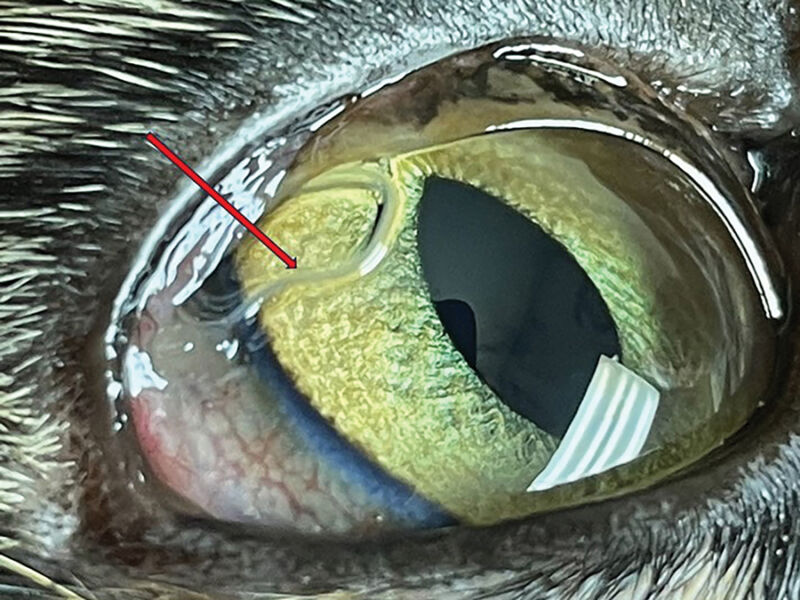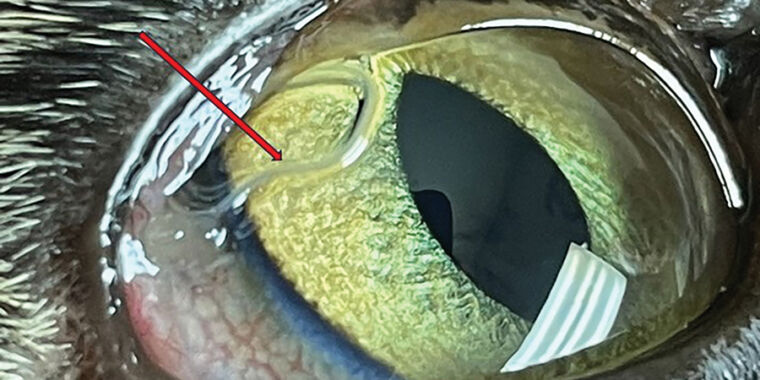
In a battle of bear versus exotic eye worm, the eye worm wins—and that’s bad news for all of us.
Researchers on Wednesday reported the first known infection of an exotic eye worm in a black bear in the US, which was killed in Pennsylvania in November 2023. The bear had at least 13 adult parasitic worms pulled from its eyes, and the researchers identified them as the invasive, potentially blinding species Thelazia callipaeda, which was only first detected in the US in 2020.
The bear’s infection shows that the worm is rapidly expanding both its range of potential hosts as well as its geographic foothold in the US. In all, the finding “implicates exposure and risk for transmission to threatened and endangered species and direct or indirect risk for transmission to humans and domestic animals,” write the researchers, led by veterinary experts at the University of Pennsylvania. Their report appears today in the journal Emerging Infectious Diseases.
T. callipaeda is a nematode previously known for spreading in Asia and Eastern Europe, where it plagues carnivores, rabbits and hares, rodents, and primates (including humans). But it has recently undergone a swift and massive expansion in its range, including to Western Europe and North America. The initial 2020 detection in the US was in an eye of a pet dog in New York that had no travel history. Since then, it has shown up in at least 11 dogs—in New York, New Jersey, Connecticut, and Nevada—and two cats in New York, according to a study published in February. (The travel history of the Nevada dog is unknown, so it’s unclear where that infection occurred.)
In the new study, the UPenn researchers noted that the adult female bear with the T. callipaeda infection was “legally harvested” in Monroe County. The infection was detected as it was being processed for taxidermy. The researchers noted that two other bears harvested in the area had similar eye worm infections, but those cases were not investigated to determine the type of worms.
Testes to tears
While it’s clear T. callipaeda is spreading quickly, it’s unclear how far its expansion will reach. The worm spreads via a variegated fruit fly, Phortica variegate, that feasts on the tears and salty eye secretions of various mammals. There’s only limited data on P. variegate‘s distribution in the US. But it’s clearly an effective vector for the worm and efficient at delivering the parasite to new hosts.
The fruit fly’s role is not just to transport T. callipaeda, but also to help it grow. The life cycle of the worm starts in a host’s eye, where early-stage (L1) larvae are released by adult female worms and picked up by a male fly. The fly then becomes infected, with the larvae going through two developmental stages in the fly’s testes. When they’re ready, the third-stage (L3) larvae migrate to the fly’s mouthparts, where they can be transferred to a new host.
In an eye, the worms can cause mild symptoms, like redness and watering, but also severe problems, such as crusty lesions, corneal ulcers, and even blindness. While it’s mainly an infection seen in animals, in countries where the parasite is more established, it’s also seen in humans, mainly children and older people in low economic settings.
There is no specific treatment. Instead, good outcomes depend on timely diagnosis, physically removing the adult worms, and general deworming medications, such as ivermectin, emodepside, or moxidectin.
By invading the US, T. callipaeda joins two of its relatives, T. gulosa, which commonly infects cattle, and T. californiensis (the California eye worm), which infects a range of animals in the Western US, often in California. Both T. gulosa and T. californiensis are uncommon infections.

